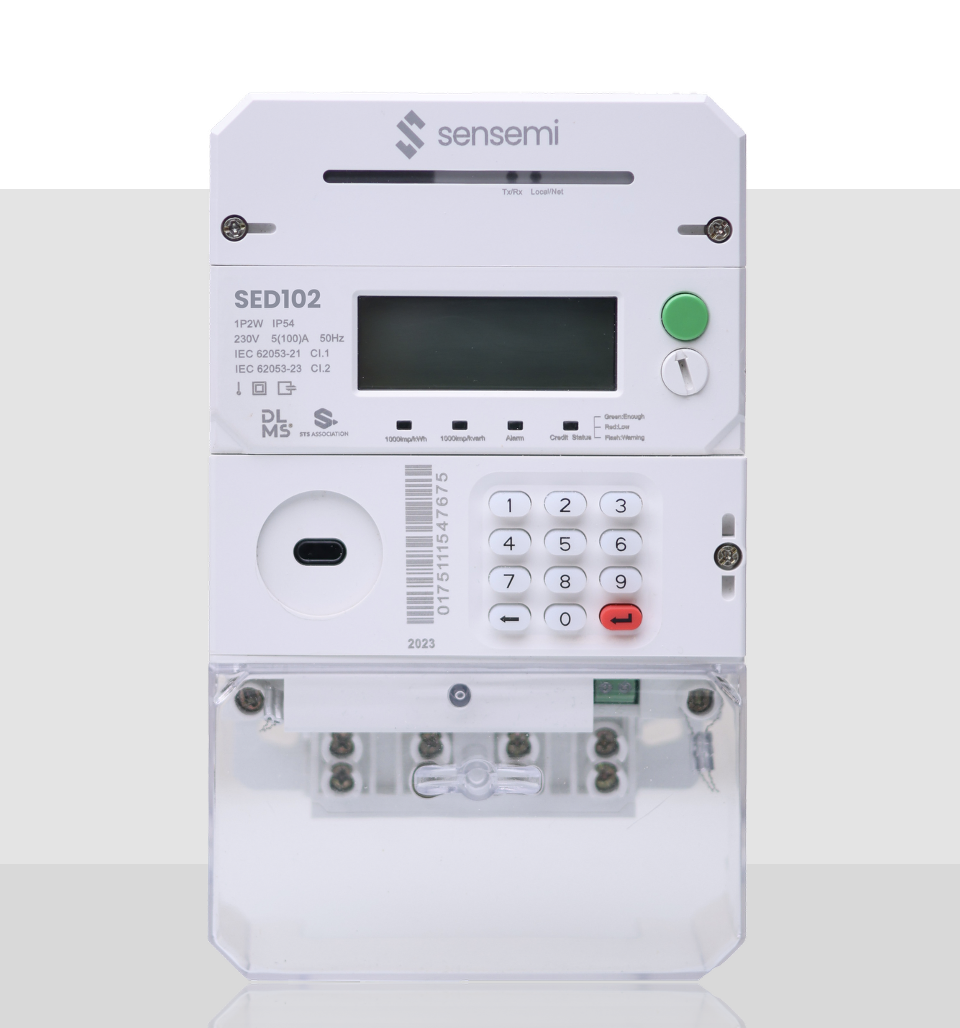
The SED102 Smart Electricity Meter is a single-phase meter designed with high flexibility for input communication. It boasts the capability to simultaneously accommodate up to three modules, comprising two communication modules and one input module.
The SED102 SmartElectricity Meter is a single-phase meter designed with high flexibility for input communication. It boasts the capability to simultaneously accommodate up to three modules, comprising two communication modules and one input module.
The digital display on the front cover provides real-time information such as energy consumption, voltage, and current.
A button is included for users to query or cycle through different data on the display.This can help users’ access additional information or navigate the meter'smenu.
An optical communication interface is present for data exchange. This interface might be used for data reading , configuration and firmware upgrade.
Important meter information is printed on both the front cover and the module door. This could include details like the meter's serial number, model, and other relevant specifications.
There is a sealable demand button that allows for demand reset. The sealable design ensures that the settings remain secure and tamper resistant.
The characteristics of the single-phase SME102 smart electricity meter are as follows:
The meter supports a plug-in remote communication module, allowing for flexible communication options and easy upgrades
It features a plug-in input module, supporting either a keypad or Near Field Communication(NFC) technology for user interaction and data input.
The meter complies with the DLMS/COSEM (Device LanguageMessage Specification / Companion Specification for Energy Metering) standard.This ensures full interoperability with head-end systems and other compliant devices, enabling standardized data exchange, remote configuration, and secure communication across smart utility networks.
The meter supports software upgrades, which can be performed either locally or remotely.This ensures that the meter can stay up-to-date with the latest features and security enhancements
Communication data encryption is implemented to ensure highly reliable and secure communication between the meter and external systems.
An internal large capacity magnetic latching relay is included, supporting load control through parameter configuration or communication commands. This allows for efficient management of electrical loads.
The meter complies with the STS (Standard Transfer Specification) standard, which is often used for secure and standardized token-based prepayment systems. These characteristics collectively contribute to the functionality, reliability, and versatility of the SED102 smart electricity meter in various applications, offering advanced features for both users and utility providers.
The meter has a high level of accuracy for active energy measurement, complying with Class 1standards as per IEC 62053-21.
The meter offers a wide range of current measurement, covering starting current to the maximum current, with accurate readings.
It provides data display functionality, including information presented on the meter's LCD display. Users can access real-time data about energy consumption, voltage, current, and more.
The meter can detect grid parameters in real-time, including power, voltage, current, power factor, etc. This information is crucial for monitoring and managing the electrical grid.
The meter supports a changeable battery, ensuring that the display remains functional even in the absence of power. This is important for continuous monitoring and data retrieval.
A real-time clock is integrated into the meter, providing accurate time stamping for data and events.
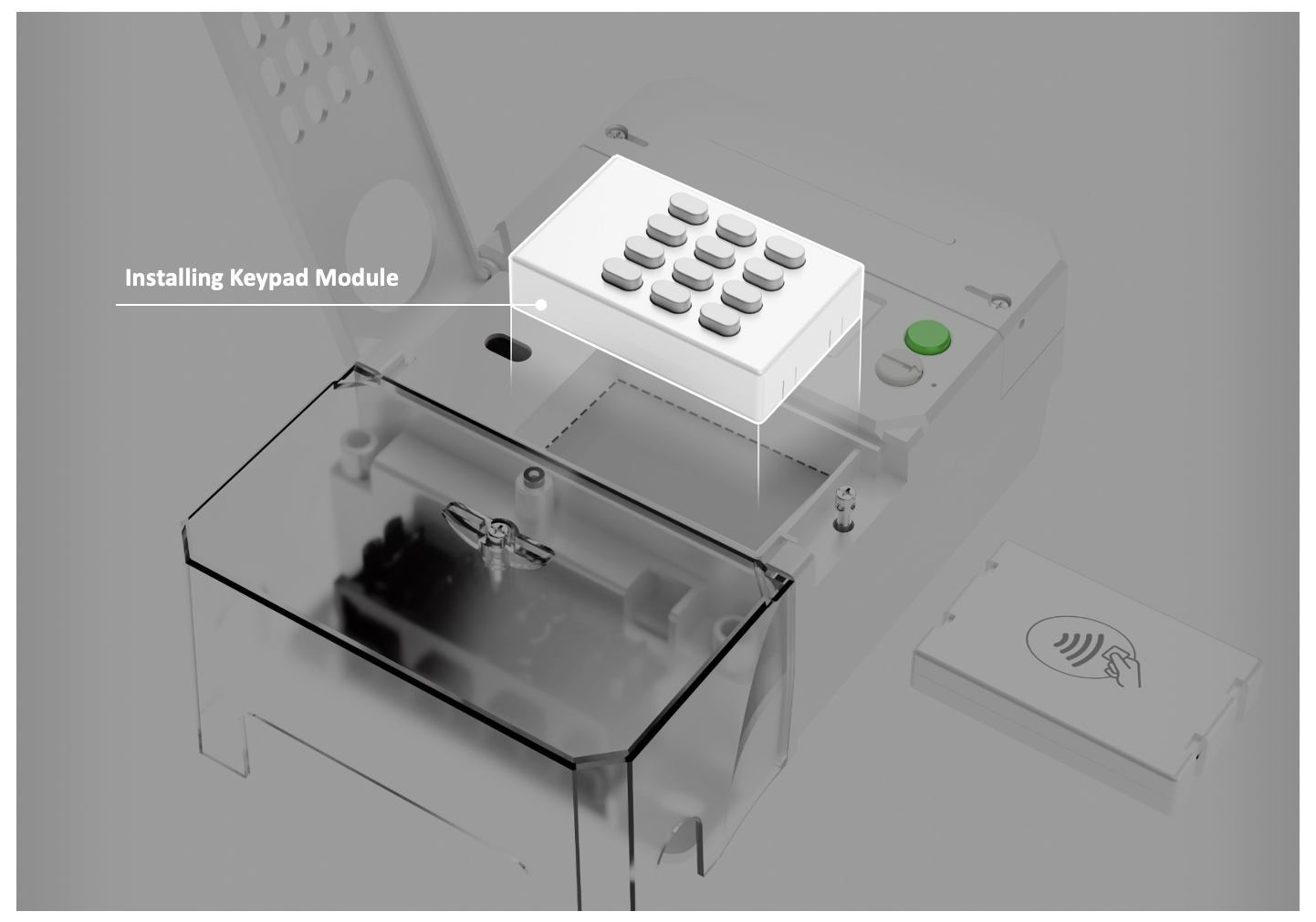
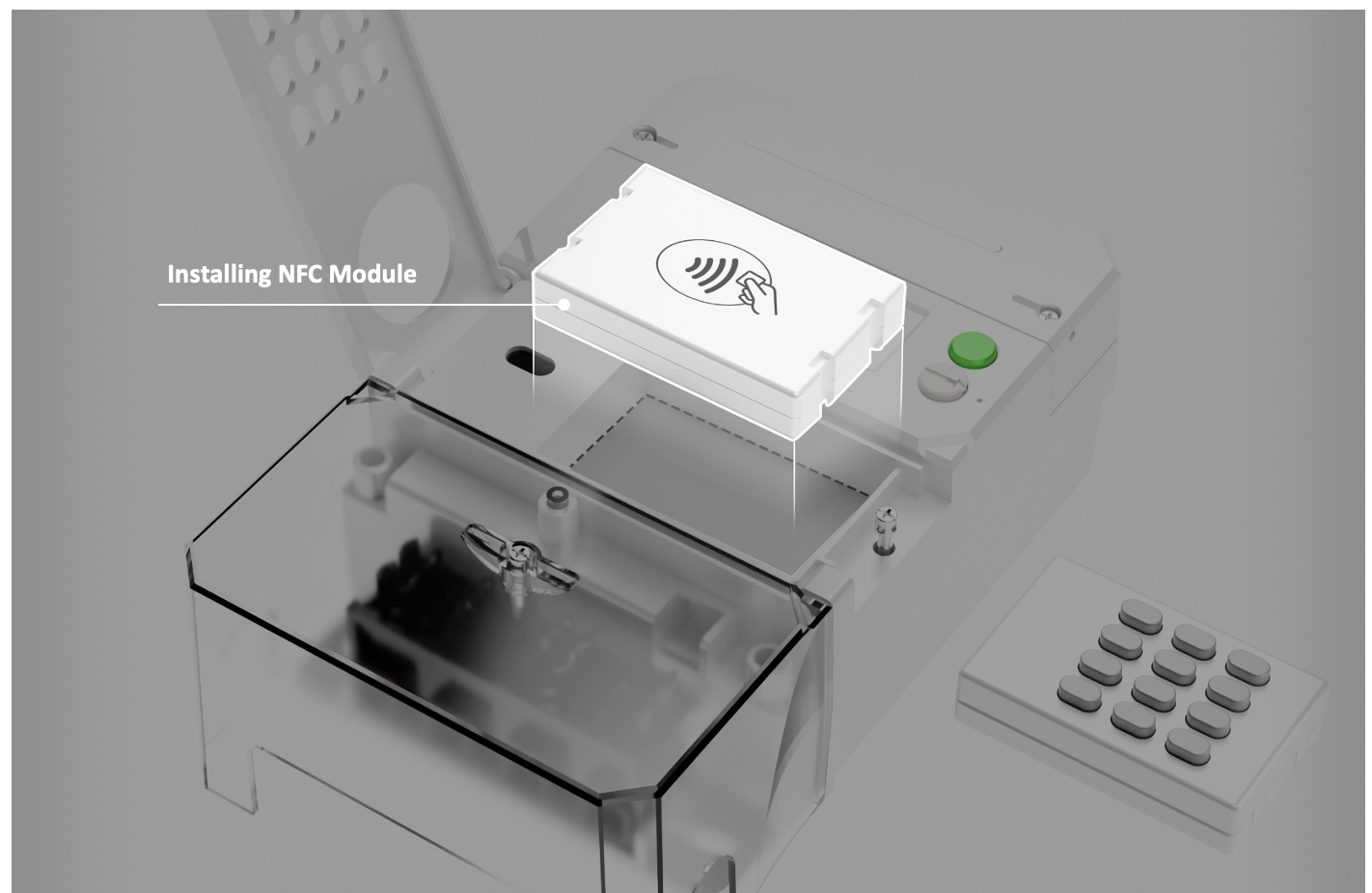
•The meter base and cover are made of non-metallic material.
•The material is non-hygroscopic (does not absorb moisture).
•It is UV stabilized, which means it can withstand exposure to sunlight without significant degradation.
•The material is flame retardant, offering safety in the event of a fire.
•It is polished, providing a smooth and aesthetically pleasing surface.
•The material has high impact-resilience, indicating its ability to absorb and with stand impacts without breaking.
•It has low dirt absorption properties, making it easier to clean and maintain. The material used for the terminal block is capable of passing the ISO 75-1 standard. ISO75-1 is a standard for testing the temperature behavior of plastics.
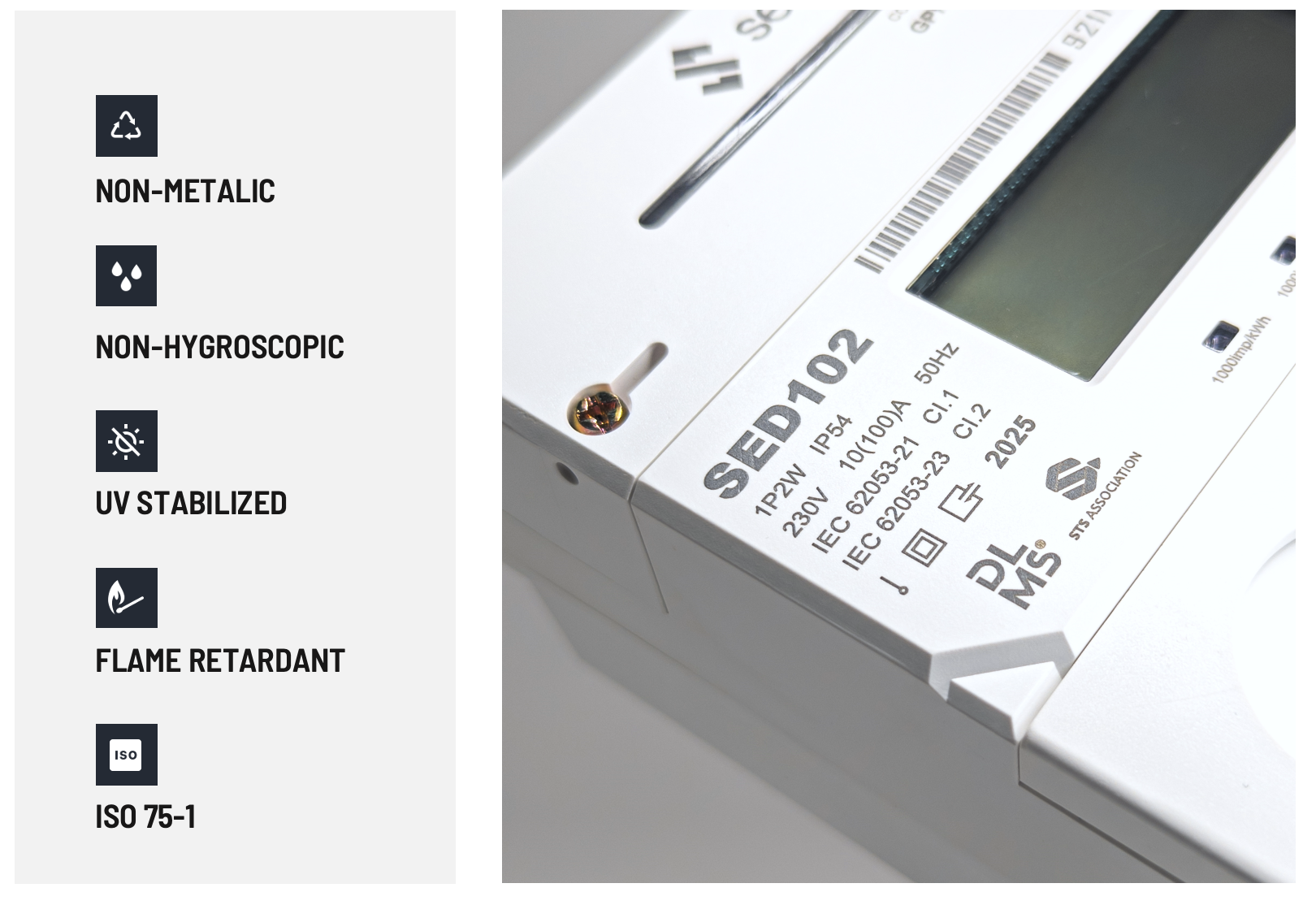
The case includes variouscomponents that are visible from the outside.
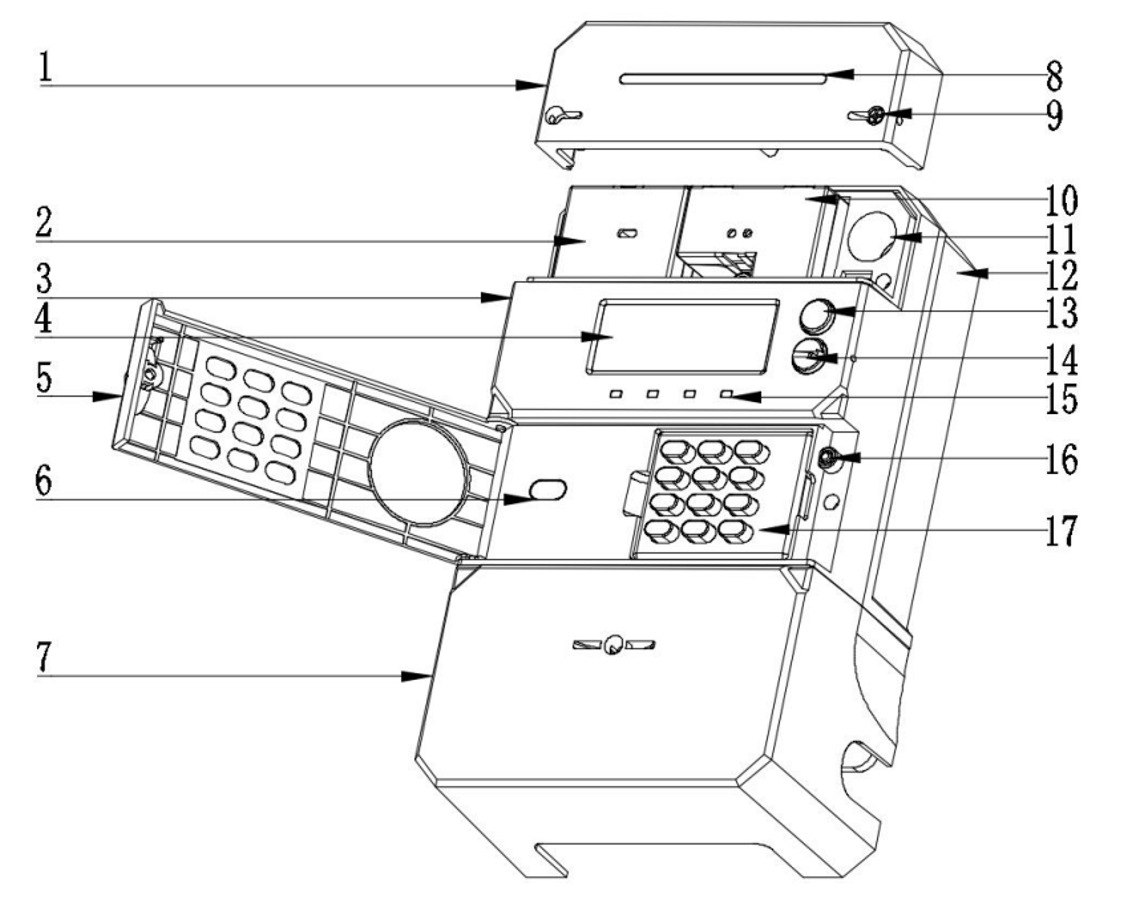
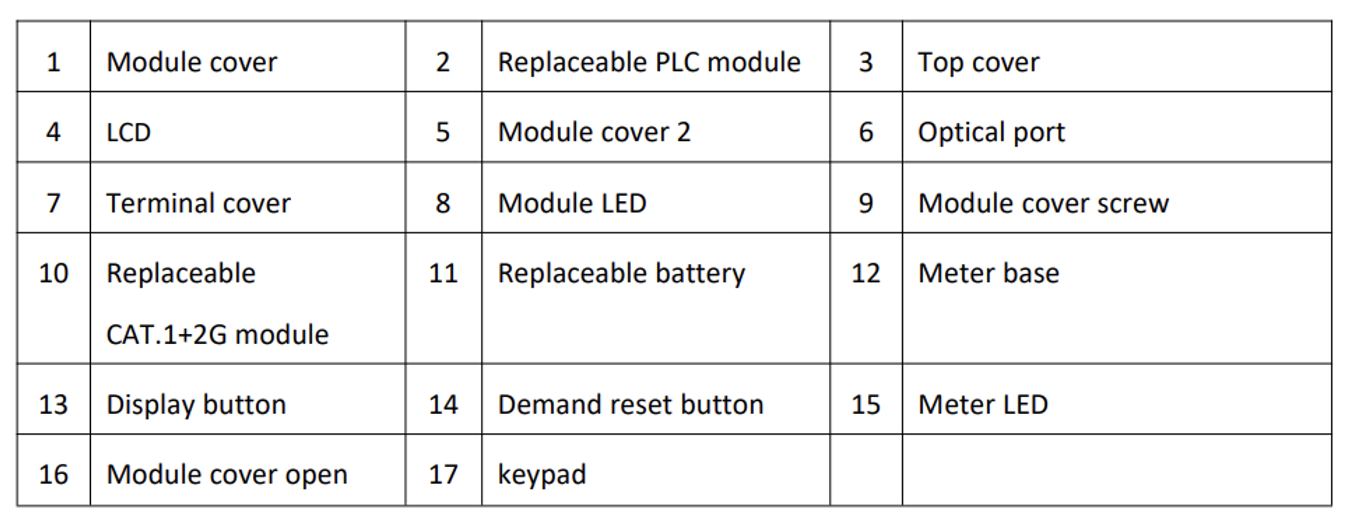
The single-phase SED102smart electricity meter has several major applications:
The meter supports remote communication and control using a CAT.1+2G module. This enables two-way communication with utility providers or other relevant entities.
The meter utilizes digital media for information exchange. This likely involves the use of digital signals or protocols for transmitting and receiving data, enhancing the efficiency and accuracy of communication.
The inclusion of a keypad and button input unit allows for user interaction. Users can in put commands, query data, or navigate through the meter's features using the keypad and buttons.
Infrared communication capability is included, allowing the meter to communicate with other devices or systems using infrared signals.
The meter adheres to the DLMS/COSEM (DeviceLanguageMessage Specification/Companion Specification for Energy Metering) standard. This specification facilitates interoperability and allows the meter to connect seamlessly with the master station or other devices that also comply with the standard.
The electric meter's PCB (Printed Circuit Board) is coated with protective paint. This protective layer serves as a barrier against moisture, dust, and pests, ensuring the durability and reliability of the meter in various environmental conditions. The SED102 smart electricity meter offers a range of advanced features for communication, control, and measurement, making it suitable for modern energy management systems. These capabilities contribute to more efficient energy usage, billing, and overall utility operations.
The load switch may enable remote control of electrical loads, contributing to demand response and load management strategies.
he meter includes a measurement unit responsible for accurately measuring electricity consumption. This unit ensures precise data collection for billing and monitoring purposes.
A display unit is integrated into the meter, providing real-time information about energy consumption, voltage, and current. Users can easily access and monitor their electricity usage.
The meter incorporates a real-time clock unit, enabling it to timestamp data and events accurately. This feature is crucial for time-of-use billing and tracking consumption patterns over specific time periods.
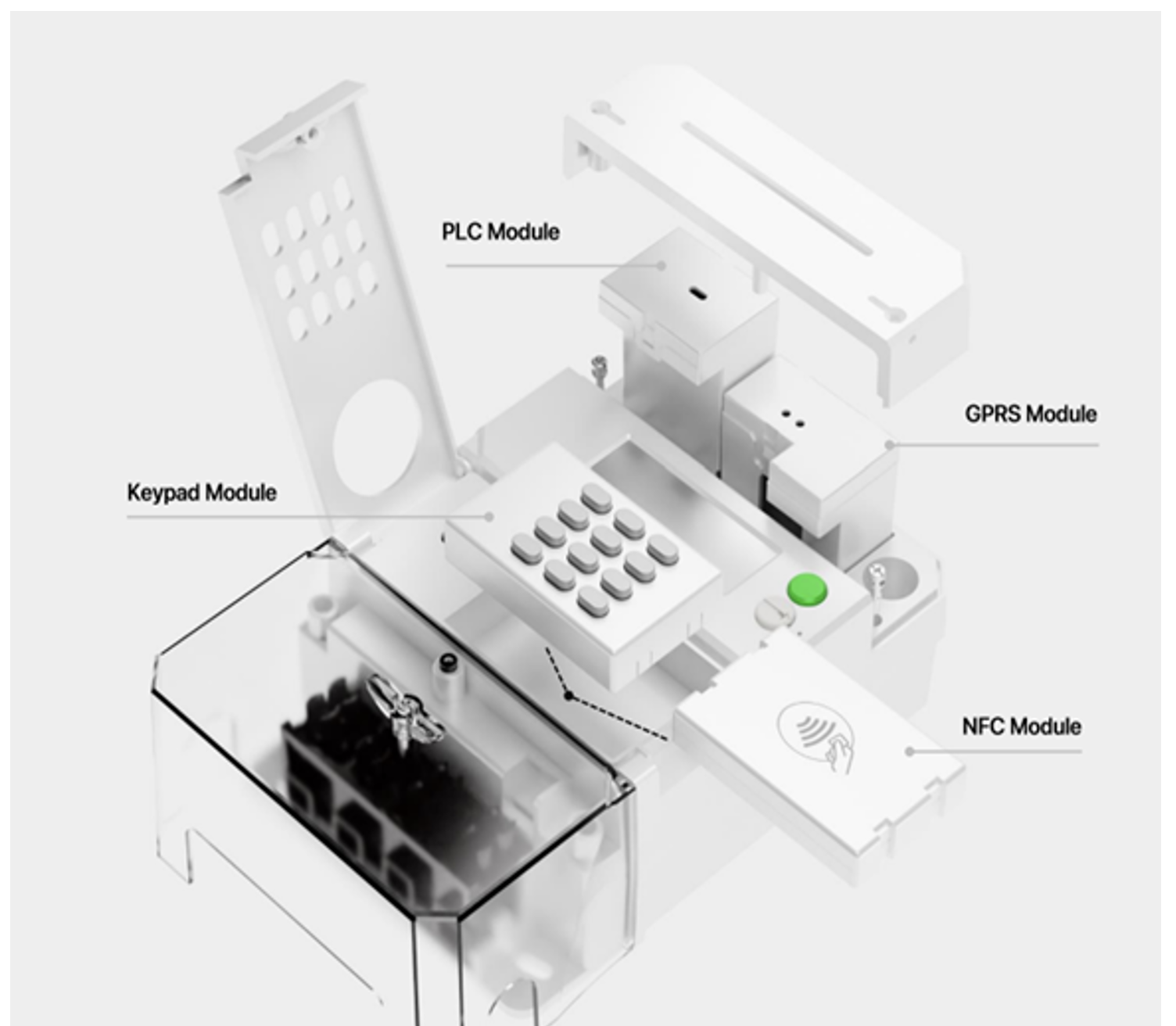
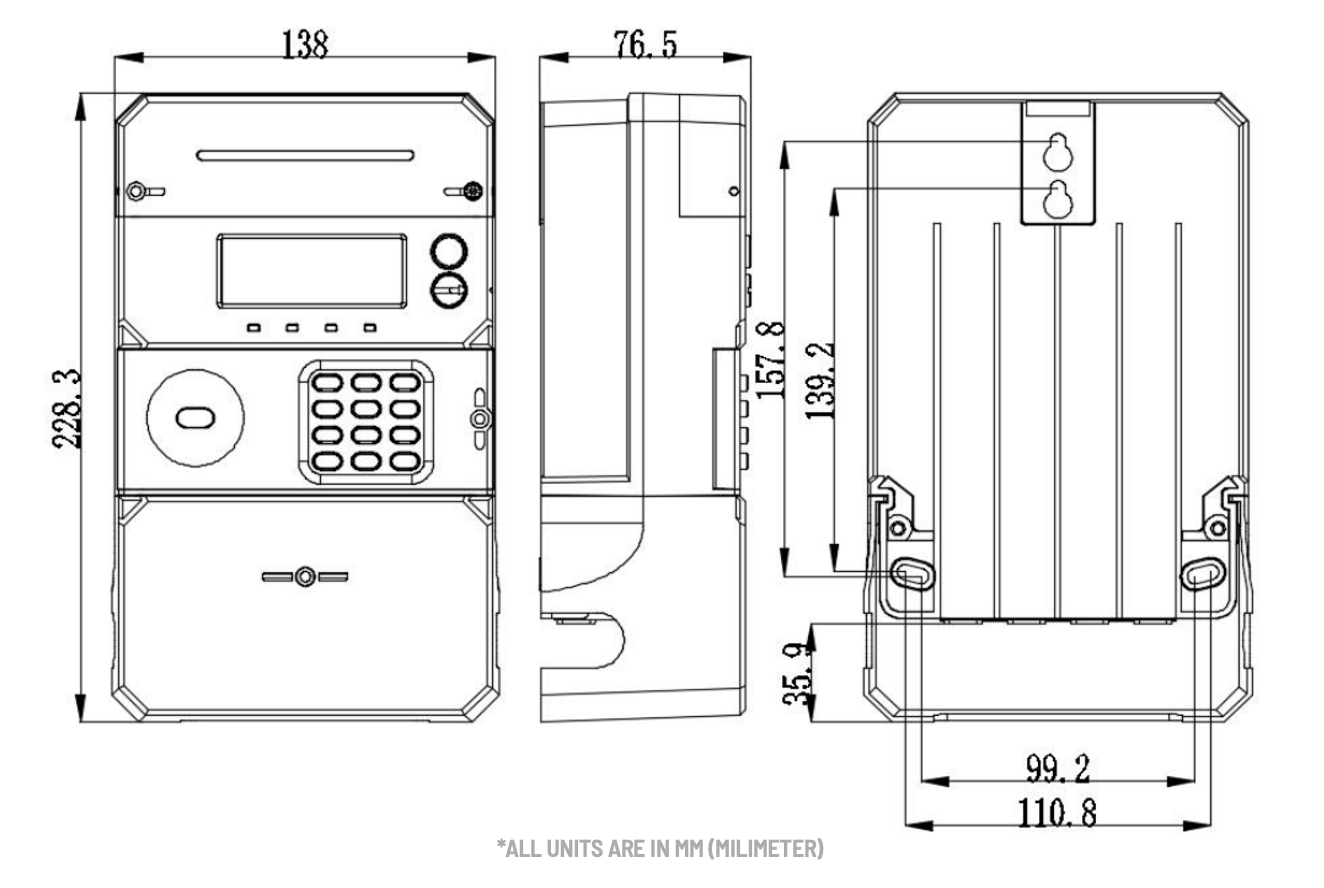
The meter is forfront projection mounting. The terminal holes and screws are moving cage type.
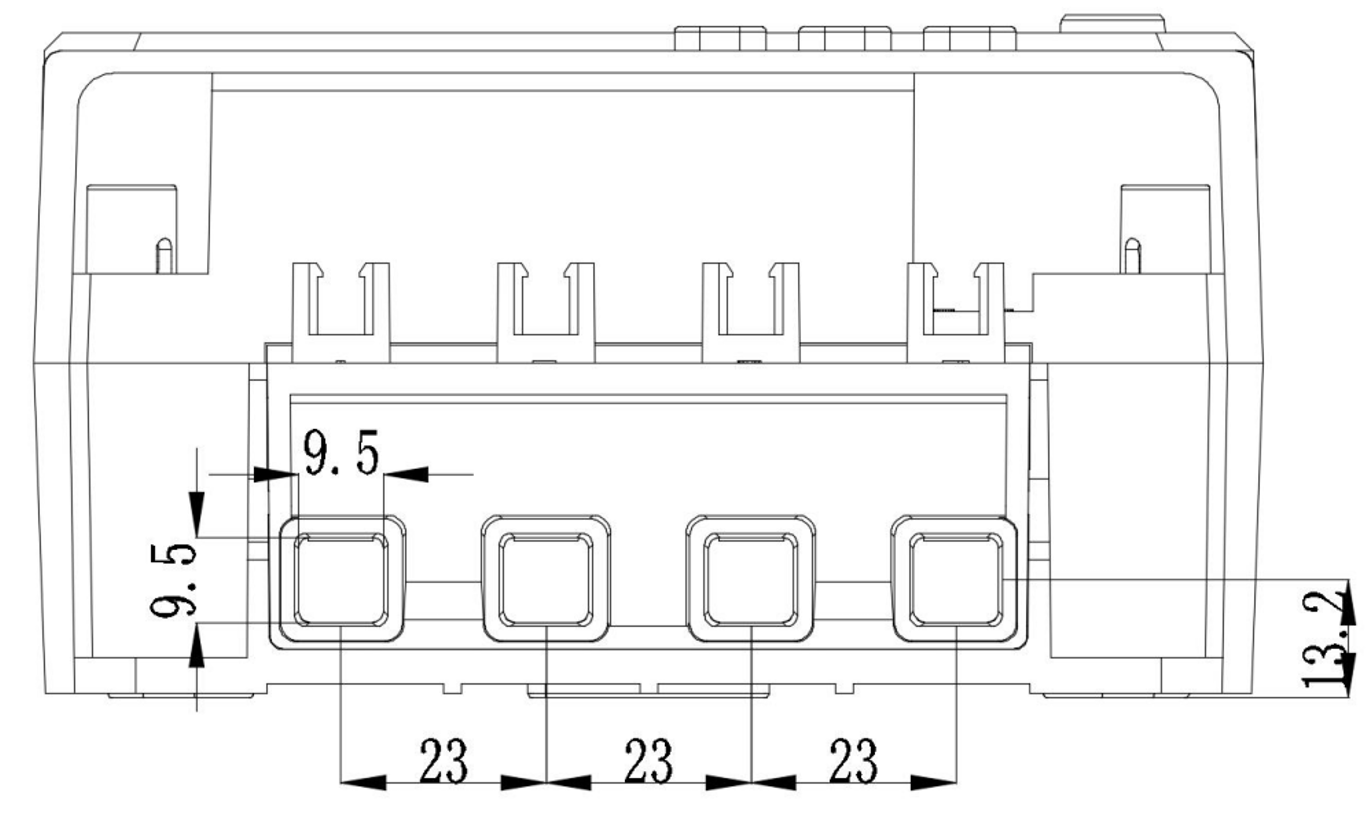
The wiring diagram is laser printed on the terminal cover of the meter. This provides users with clear guidance on how to connect the meter according to their specific requirements. The Material used for the Microcontroller Unit (MCU)enclosure has good dielectric and mechanical strength with the minimum thickness of 2.0mm, ensuring durability and robustness. The material used in the MCU enclosure complies with the IEC 60695-2-11 standard, which involves the glow wire test. This standard assesses the fire hazard of electrical equipment by exposing it to a simulated ignition source. These specifications reflect a focus on safety, durability, and compliance with industry standards for the materials used in the construction of the smart electricity meter. The inclusion of the wiring diagram on the terminal cover makes the installation process user friendly and efficient, allowing customers to follow clear instructions for proper connection.

